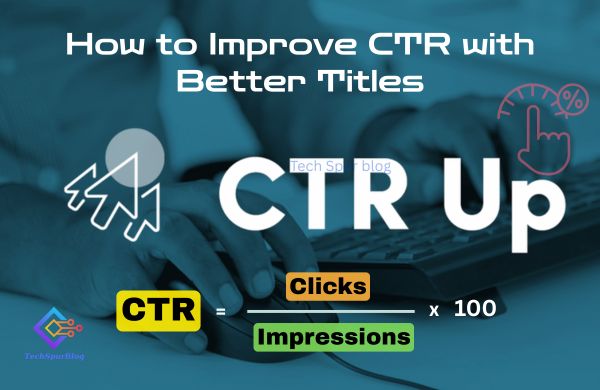Auditing your SEO campaign is the most important thing to do. It allows you to alter your SEO campaign to ensure better results. Whether you are a small business trying to optimize your website for driving organic traffic or an agency doing similar stuff for a client, it can be hard to know where to begin.
Not only that, you may also get confused during an in-depth analysis. You need to know how to carry out an SEO audit in an accurate manner.
In this article, you will explore how to audit your website’s SEO by following some specific steps. By doing so, you will be able to ensure optimum outcomes for your website’s SEO efforts.
Steps You Need to Follow to Perform an SEO Audit
Here are some essential steps that you need to follow while performing an audit of your SEO campaign:
Step 1: Recognize Opportunities for Building Links
Link building is a vital part of getting website authority. An SEO audit is incomplete without recommendations for building internal and external links relevant to the niche of your website.
Internal links pass link equity within your own pages, which makes them essential for developing authoritative hierarchies within your site. The most suitable way to build backlinks is to create new content, do a site search for older, relevant content that has built some equity, and find anchor text within the old content to link to the fresh content.
There are many online tools available, such as MozBar, which will help you with this job. You may want to link from the website with the highest page authority. However, you need to keep in mind that Domain Authority(DA) and PA are not the official metrics for your SEO campaign.
These metrics are used by software companies to provide estimates of a specific page’s domain authority. Furthermore, they are pretty accurate and useful in determining which site you need to link from.
You should also keep user experience and informational architecture in mind while gaining internal links. Another essential thing to do is to search for the resource list that will be able to realistically feature your content and link back to your website.
Also Read: PressWhizz Review: An SEO’s Guide to Buying Quality Backlinks
Step 2: Recognize Site Structure Enhancements
Information architecture, or IA, is a term that basically defines the way information is ordered or structured. With respect to SEO audit, this means redistribution of internal linking structures on your website to pass equity to the pages that need it.
To ensure that, you need to work closely with designers and developers to create a user-friendly solution that will enhance page authority without messing up the user experience.
In addition to that, if your blog index consists of only ten pages at a time, it will take older posts some 20-30 clicks away from your homepage. To avoid such a situation, consider increasing the number of blog posts on every page. By doing so, you will be able to bring those older pages near the homepage.
In addition to that, you need to check for overlapping links. These links include “related posts” sections of your blog. Or else, you will find them in the header and footer. You need to replace those duplicate links to other pages to which you want to pass equity. This will help you fully maximize and utilize the link space.
Step 3: Analyze Website Indexing
Just because your page is crawlable doesn’t guarantee that it will be indexed by search engines. Search engines utilize the indexing process to add your pages to their database. This makes your webpages eligible to appear in search results.
You can utilize the “Coverage” report feature of Google Search Console to see which of your pages are getting indexed and which aren’t.
Common indexing issues include:
Duplicate Content: Search engines prefer unique content, recognize and address duplicate content issues via canonical tags, redirects, or content consolidation.
Thin Content: Pages with little to no valuable content won’t rank well or might even pose a threat to other pages that need to get indexed.
Orphan Pages: These are the pages that are not linked to from any other page on your site. These pages are difficult for search engines and users to find.
Also Read: SEO Link Building Techniques and What are the tools for SEO?
Step 4: Evaluating On-Page SEO Aspects
On-page SEO refers to the optimization of every web page to enhance their search engine rankings and user experience. Essential things that you need to analyze include:
Title Tags and Meta Descriptions: These snippets show up in search results. You should make sure that they are compelling, accurately reflect the page content, and include relevant keywords.
Headings(H1-H6): Use headings to structure your content logically and highlight important keywords. It is a must for every page to have at least one clear H1 tag.
Content Relevance and Quality: Your content should be informative, interactive, and well-written. It should be able to address the search intent of a user in a direct manner. Ensure uniqueness and value while producing content.
Keyword Usage: While the usage of keywords is important, you need to ensure that the relevant keywords are strategically placed rather than being stuffed throughout your content, heading, and meta tags.
Image Optimization: Optimize image file names, alt text, and file sizes to improve the load speed of every webpage. It will also help you provide context regarding these images to search engines.
Internal Linking: Link relevant pages within your website to enhance navigation, distribute link equity, and help search engines understand your site structure.
Step 5: Analyze User Experience & Website Structure
Your website needs to be well-structured, which is essential for both users and search engines. A logical hierarchy and clear navigation will make it easier for bots to crawl and index your content and for users to find what they are looking for.
Also Read: Differences Between White Hat, Black Hat, and Grey Hat SEO Strategies
To Summarize
SEO is the most crucial aspect for a website. To ensure its success, you need a campaign that will help you drive organic traffic and sales for your business. With the abovementioned steps, you will be able to audit your SEO campaign more efficiently.
These steps will help you recognize any areas of improvement and personalize your SEO campaign accordingly to ensure it drives more sales and organic traffic. This way, you will be able to achieve your business objectives effectively.


















